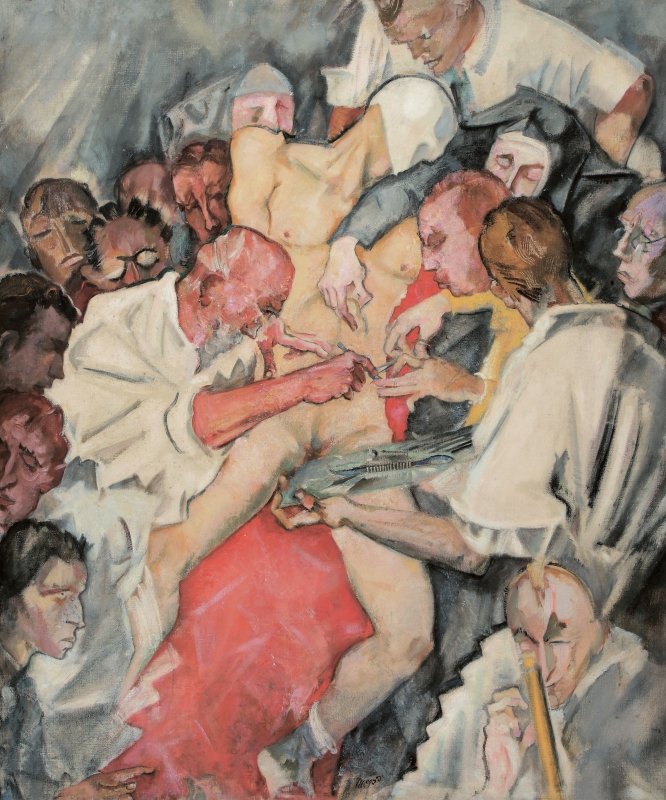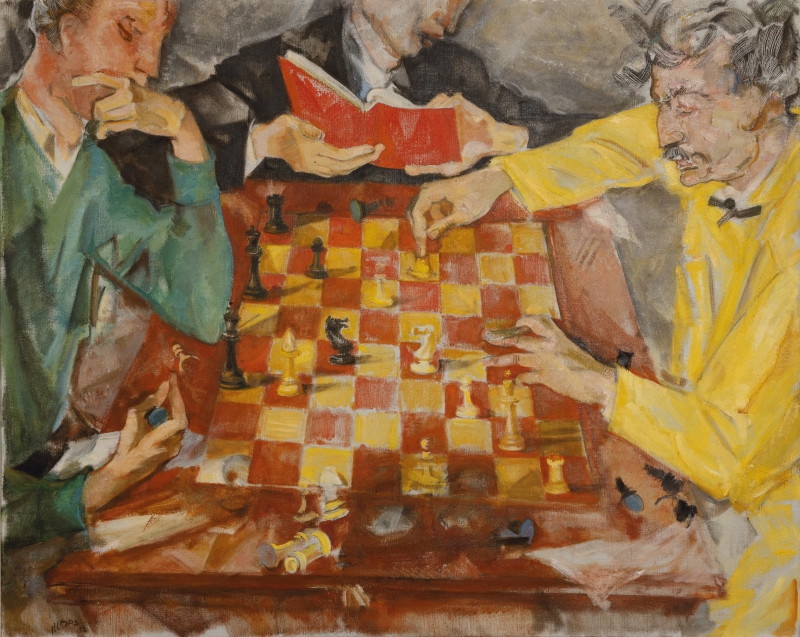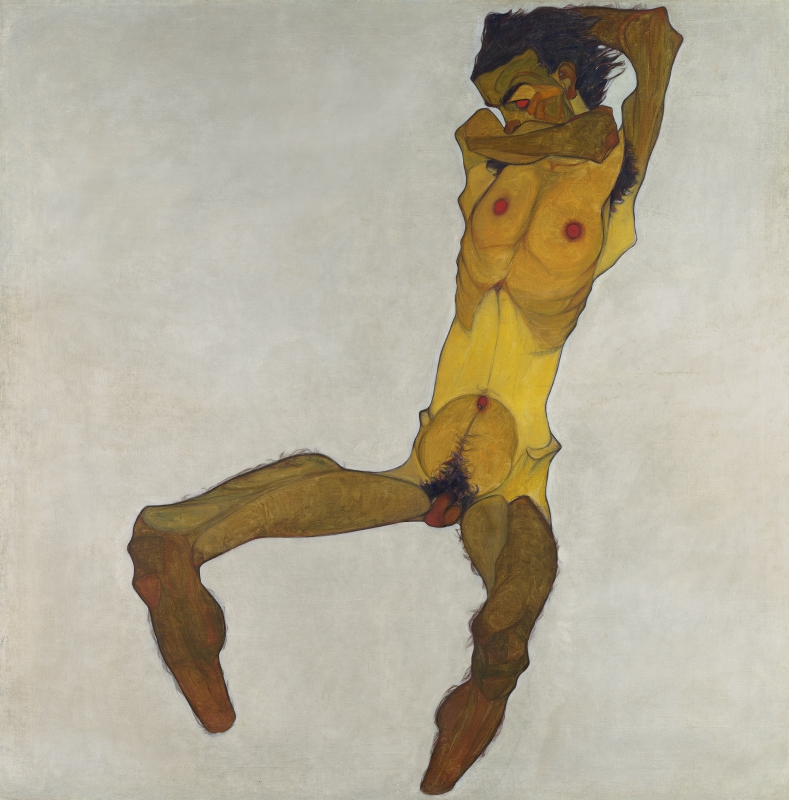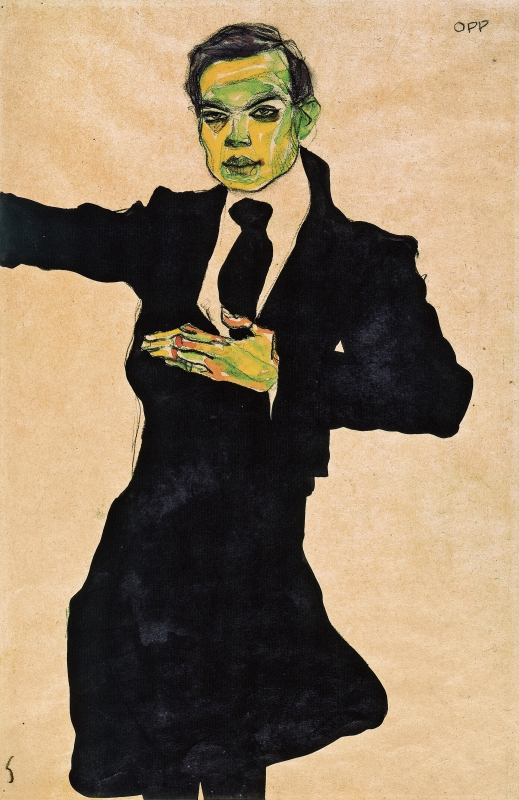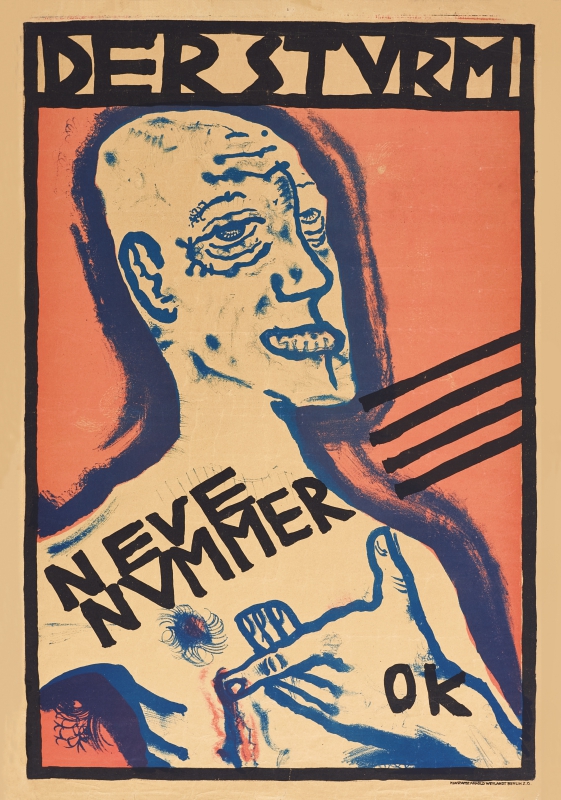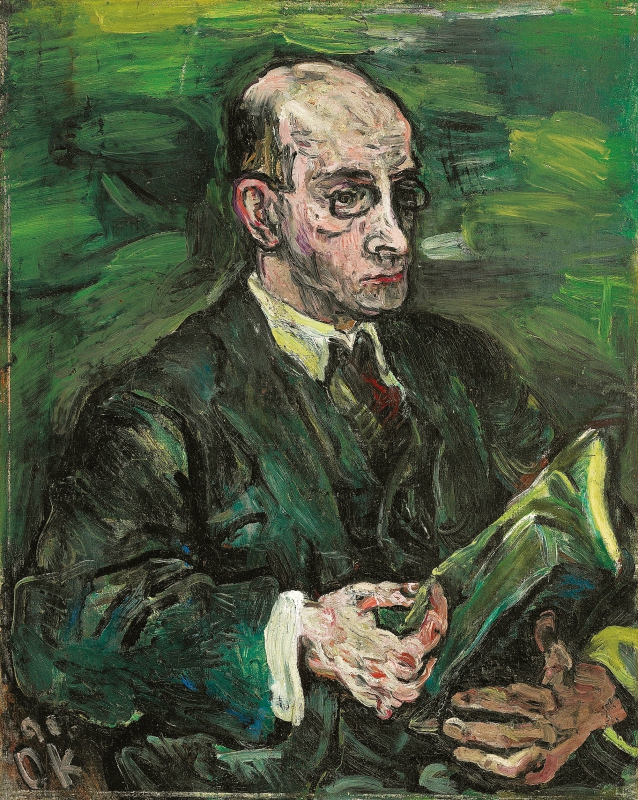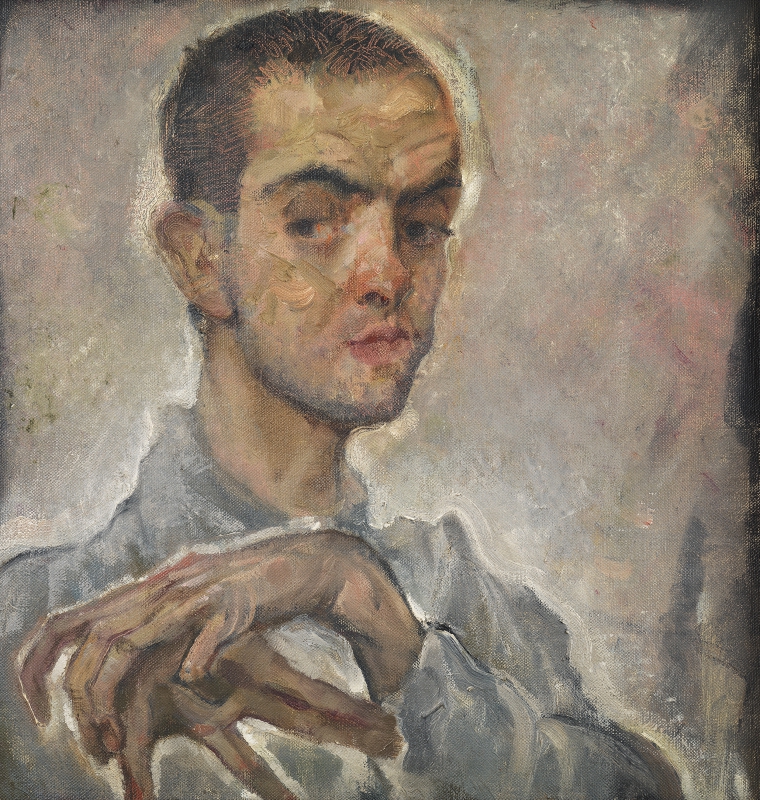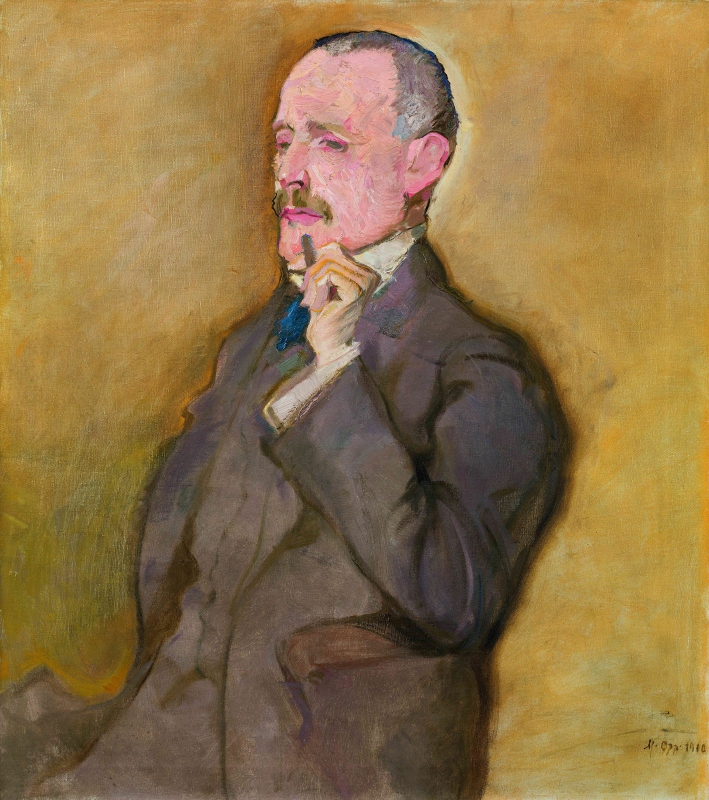6TH OCT. 2023–25TH FEB. 2024
With the most comprehensive retrospective to date on the Vienna-born artist Max Oppenheimer (1885–1954), the Leopold Museum is inviting visitors to rediscover a significant yet almost forgotten oeuvre. The exhibition illustrates how radically the painter acquired his ever evolving and distinctive signature style, formulating a substantial contribution to modern art in the process. By the 1910s Oppenheimer was already a well-known artistic personality. While leading galleries and museums in Austria, Germany and Switzerland showcased exhibitions of his works, museum and private collections also included them in their inventory.
The presentation looks at the artist’s role and networks through his contemporaries Egon Schiele and Oskar Kokoschka. His initial friendship with the latter would soon turn into a veritable feud. In 1911, Oppenheimer created a poster for his exhibition at the renowned Munich gallery Thannhauser, which prompted Kokoschka to accuse him of plagiarism. Kokoschka insisted that Oppenheimer’s work was a copy of his 1910 poster for the magazine Der Sturm, and his circle went on to discredit Oppenheimer’s oeuvre.
The friendship and artistic connection between Schiele and Oppenheimer, by contrast, would last years, and manifested in their shared artistic work – Schiele’s watercolor The Painter Max Oppenheimer (1910) and Oppenheimer’s painting Portrait of Egon Schiele (1910), for instance, illustrate how the two artists portrayed and inspired each other. The Leopold Museum’s latest acquisition hails from this time, and is an icon of early Expressionism: Oppenheimer’s Self-Portrait (1911). The work, which was long considered lost, resurfaced at an auction in 2023, but was withdrawn shortly before the sale owing to claims raised by the heirs of the work’s former owner. The painting was once owned by the Viennese physician, merchant and art collector Dr. Oskar Reichel. Following Austria’s Anschluss in 1938, Dr. Reichel was persecuted by the National Socialists for being Jewish, and died in 1943 in Vienna. The whereabouts of his art collection are still largely unknown. Following a settlement with Oskar Reichel’s legal heir, the Leopold Museum purchased the work in August 2023 to be able to make it accessible to the public.
Diversity of Motifs and Styles
Mythologically charged depictions like Samson (1911), or The Scourging and Lamentation (1913), show how the artist cast himself in the role of a sufferer owing to the insults he sustained as a result of Kokoschka’s hate campaign, due to emerging Anti-Semitism and on account of his homosexuality, which was condemned by society. While he had initially hoped that World War I would act as a catharsis, Oppenheimer came to see this as an illusion, and in 1915 went into exile in Switzerland as a staunch pacifist. There, he began to explore musical themes in his art, a focus that is highlighted in two exhibition rooms. The presentation further showcases many examples of his extraordinary skill as a graphic artist and of his exploration of still lifes throughout various periods in his oeuvre. In 1925, the artist moved once again to Berlin. MOPP captured the spirit of this era shaped by contrasts – by resignation and accusations on the one hand, by longing and a zest for life on the other – in his depictions of the diversions sought by metropolitan society, such as Six-Day Race (1929), for which he merged aspects of New Objectivity with Futurist elements.
Persecution and Exile
When the National Socialists rose to power, Oppenheimer was persecuted in Germany on account of his Jewish roots, and labeled a “degenerate artist”. His works were confiscated from public collections, prompting him to return in 1932 to his hometown of Vienna. When German troops invaded Austria in 1938, he was forced to flee via Switzerland to the US. Many of his works were destroyed, while others are considered lost. His exile in the US turned out to be very difficult for Oppenheimer; his uprooting led to apathy and a stagnation of his creativity. Max Oppenheimer died in 1954, lonely and impoverished, in New York.
Curator: Hans-Peter Wipplinger
1911 (Detail),Leopold Museum, Wien.
MAX OPPENHEIMER
1885–1954
Portrait of Sigmund Freud, 1909
Oil on canvas | 97 × 87,5 cm
New York Psychoanalytic Society and Institute
Photo: New York Psychoanalytic Society & Institute, New York
MAX OPPENHEIMER
1885–1954
Portrait of Adolf Loos, c. 1910
Oil on canvas | 85 × 80,5 cm Wien Museum
Photo: Wien Museum/Foto Birgit and Peter Kainz
MAXOPPENHEIMER
1885–1954
PorträtEgonSchiele,1910
ÖlaufLeinwand|46×44cmWien Museum
Foto: Wien Museum/Foto Birgit und Peter Kainz
MAX OPPENHEIMER
1885–1954
Portrait of Dr. Oskar Reichel, 1910
Oil on canvas | 82 × 72 cm Ernst Ploil, Vienna
Photo: Leopold Museum, Vienna
MAX OPPENHEIMER
1885–1954
Portrait of Ernst Koessler, 1910
Oil on canvas | 87,5 × 78 cm Museum Ortner, Vienna
Photo: Kunsthandel Giese & Schweiger

MAXOPPENHEIMER
1885–1954
Self-Portrait,1911
Oiloncanvas|60×50.5 cm
LeopoldMuseum,Vienna.Collectionacquisition(August2023)followinganagreementwiththeheirsofDr.OskarReichel
Photo: Sotheby’s/Sasa Fuis Photographie, Cologne

MAX OPPENHEIMER, Portrait of Jenny Vallière, 1913 © Private collection | Photo: Leopold Museum, Vienna/Photo: Lisa Rastl
MAX OPPENHEIMER, The Rosé Quartet, 1924 © City of Nuremberg’s Art Collections Photo: City of Nuremberg’s Art Collections | Photo: Richard Krauss
MAX OPPENHEIMER, Portrait of Ferruccio Busoni, 1919 © Private collection | Photo: Leopold Museum, Vienna/Photo: Lisa Rastl
MAX OPPENHEIMER, Six-day Racing, c. 1929 © Private collection | Photo: Leopold Museum, Vienna/Photo: Lisa Rastl
